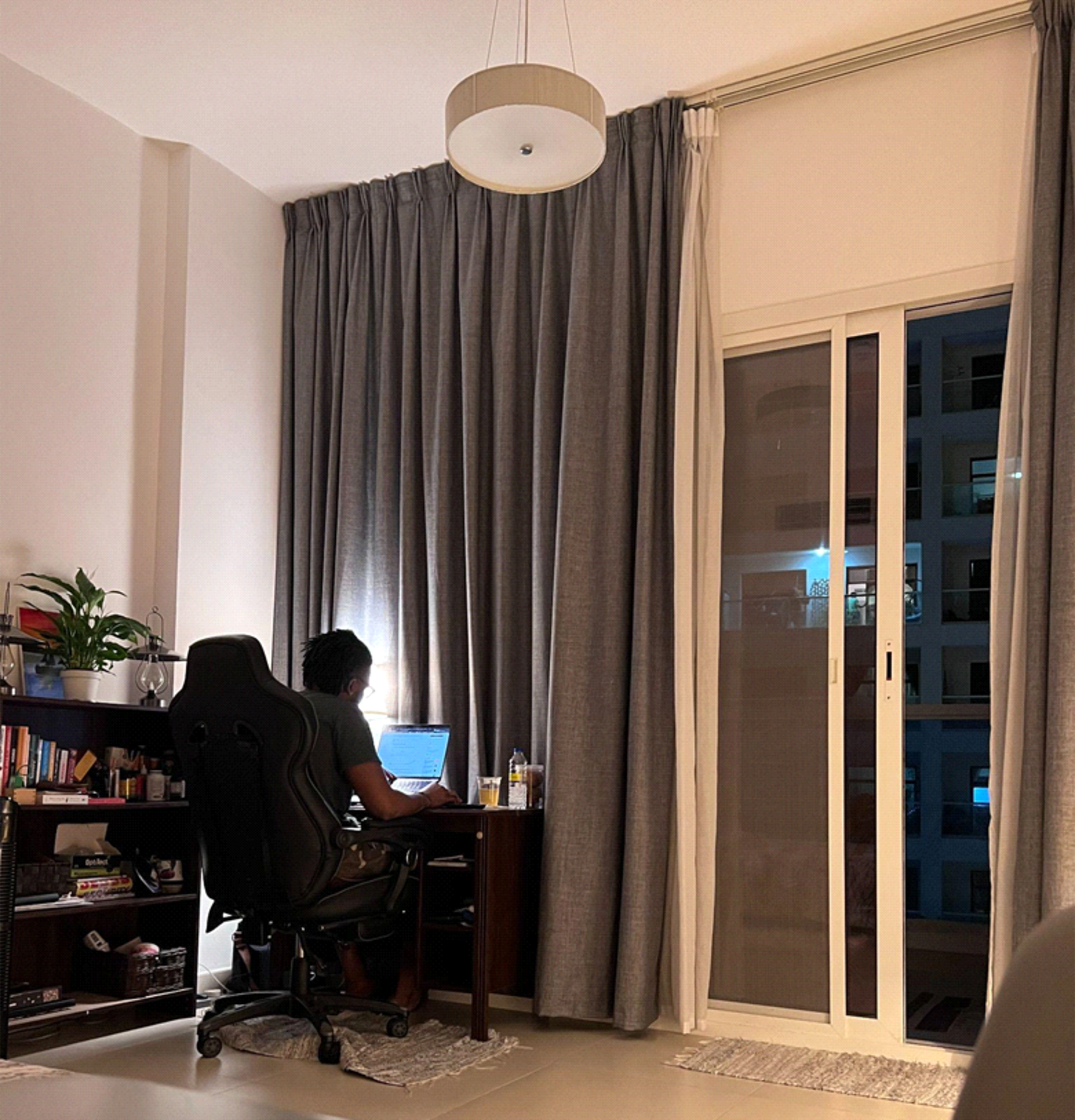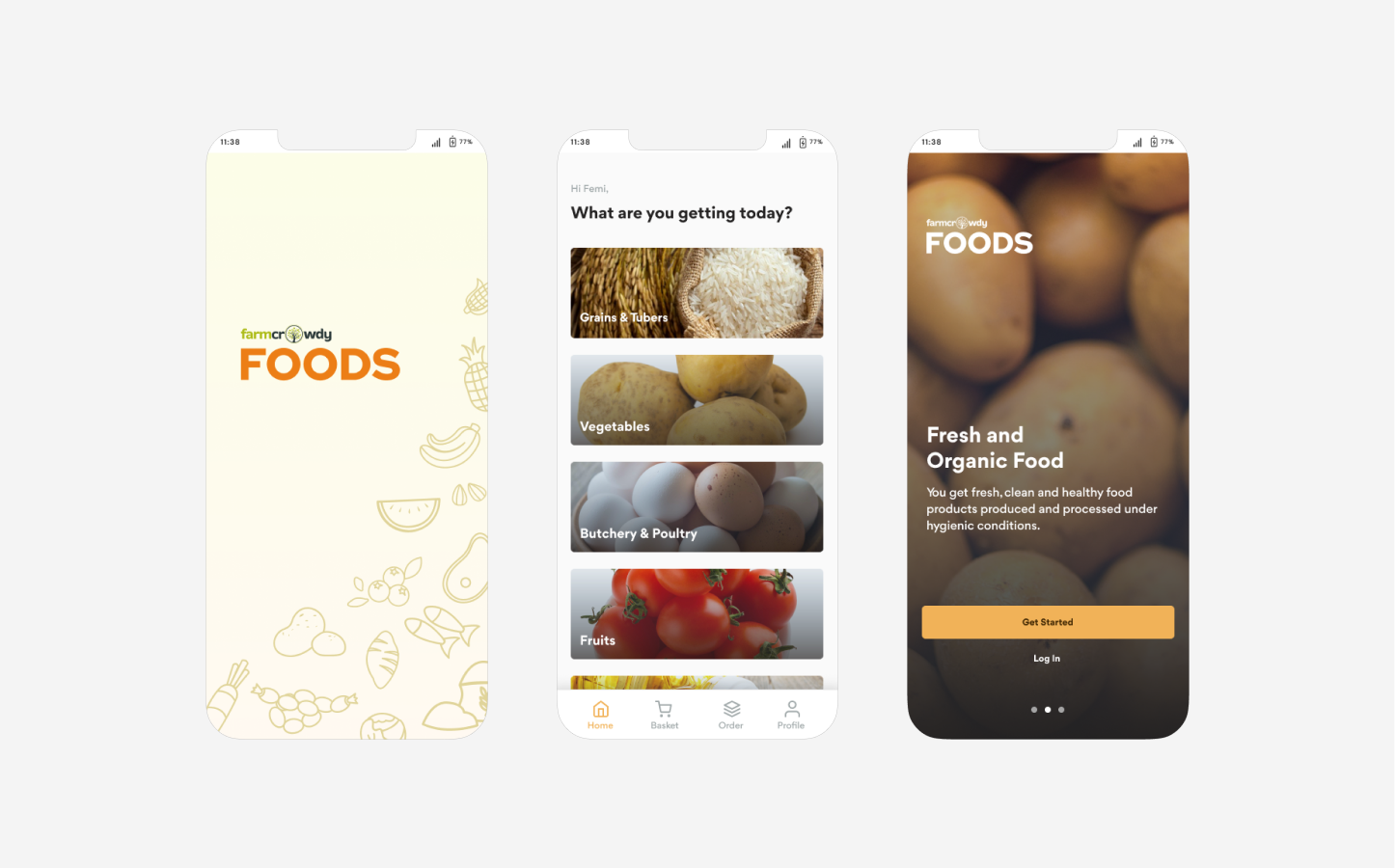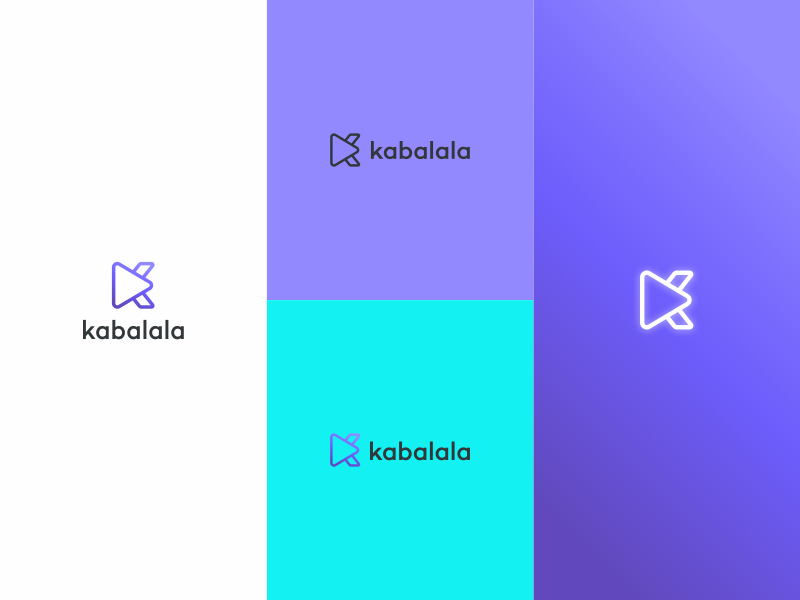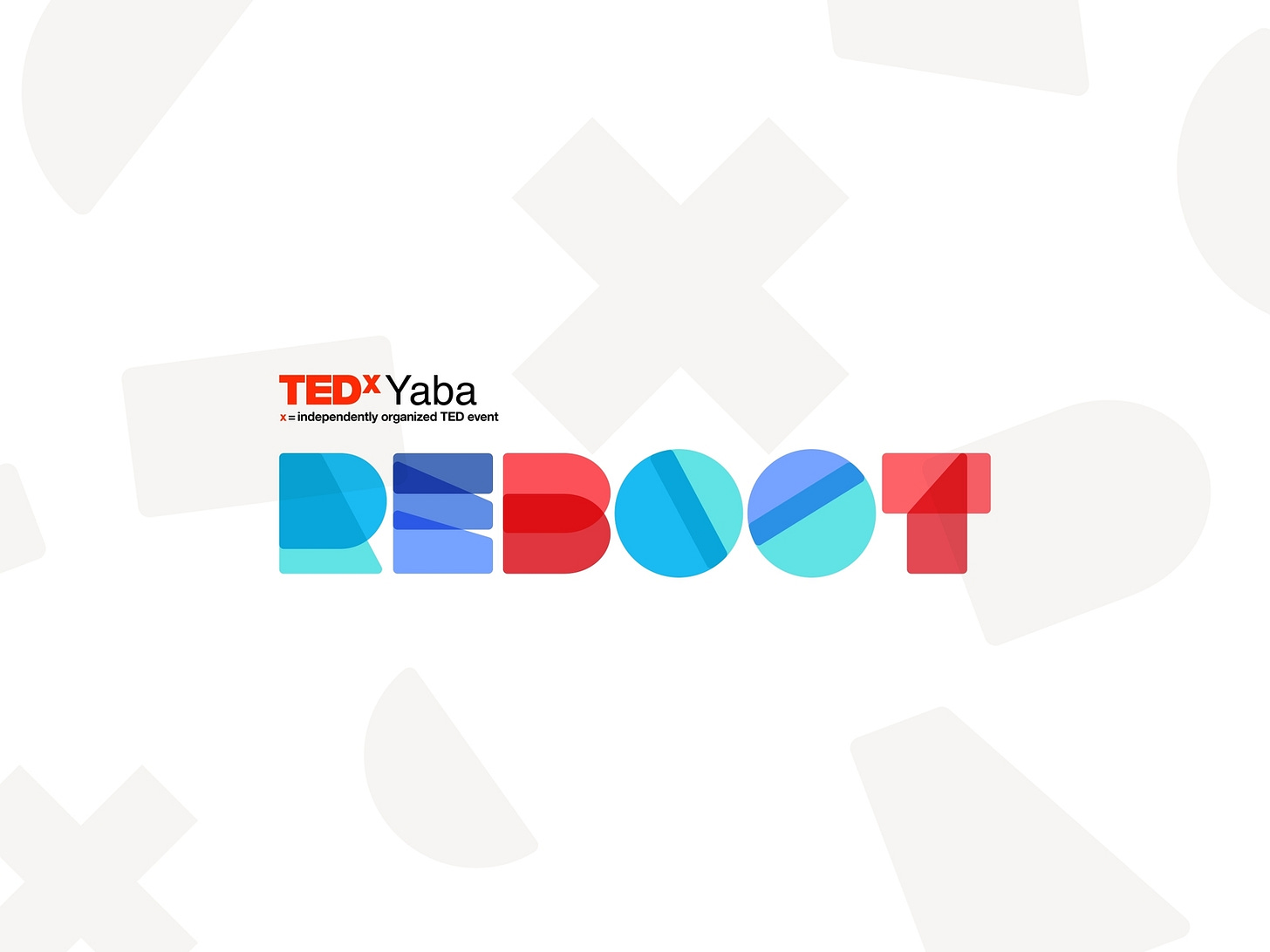Tomiwa Allan: The problem-solving designer who designed the first Agri-investment platform in Africa — #003
I have been a designer for most of my adult life. I am a designer who has a knack for problem-solving in every sense of it, not just in the traditional design sense. I like solving problems.
Hi, thank you for joining us for another edition of our interview with African Creatives. In this edition, I spoke with Tomiwa Allan Ogunmodede, a designer with a knack for problem-solving and a co-founder of two different start-ups. He shared how he and his team developed and designed the first Agri-investment platform user experience flow from scratch and the influence it has had on the African ecosystem.
If you are curious to know what drives the work he does, the major challenges he faces and how he navigates them, his favourite projects, how he spends his day, how he navigates rejections and pushbacks, the people that inspire him and the people and brand he would love to work with, you should continue reading. You will definitely love and enjoy reading this!
Tell us about yourself.
My name is Tomiwa Allan Ogunmodede. I am a designer. I have been a designer for most of my adult life. I am a designer who has a knack for problem-solving in every sense of it, not just in the traditional design sense. I like solving problems. I like looking for shortcuts which I will attribute to my ADHD, where my brain never stops racing so I look for faster ways to do things. This cuts across everything I put my hands to. I want to find a hack. This can sometimes translate to what people will consider cheating the system. I try not to do anything illegal or immoral but if there is a way to get around a process and do things faster, I will take it.
I am a senior product designer at a global non-profit that provides education to underserved communities with low internet penetration. We basically provide real-time and updated educational content and support to communities that don't have ready access to the internet.
I am also a co-founder of two different start-ups. One is Retna, a start-up trying to create a democratised library of African photos, basically, our own Shutterstock. The second one is Earlybean, where we are trying to create an easily accessible tool for financial education for families, especially for kids. We want kids to be able to understand financial systems and concepts as they grow up so that when they become adults they already have a firm grasp and understanding of finance and go into the working world at an advantage.
How did your journey into design begin? What led you to design?
I remember very clearly the first time I got paid for design because it was very random. Everyone in my family, starting with my dad, who passed earlier this year, may his soul rest in peace, has a bit of a creative tilt. I was a voracious reader growing up who also drew very avidly but as I grew up, I lost the spark. When I got into the university, for some reason, I was just drawn to people in design. Graphic design was not this big then and digital product design wasn't even a thing around here. I was just drawn to design. I installed CorelDraw on my first laptop then, I think a Toshiba, and started playing around with CorelDraw making jokey designs. I would then post these designs on Facebook which was also relatively new then. I would create things for my friends and classmates and post them on Facebook.
From one of my Facebook posts, an acquaintance reached out to me to design a poster for him because he was putting together an event for a Law Student Society in OAU. I did the design and shared it with him and then he went to Lagos to print it. When he got back, he paid me Three Thousand Naira (N3,000) and I remember asking him why he gave me the money which he replied that he got paid to do the design and he had to pay me because I did the design. I was like, I did it for fun but he insisted on paying me. I took the money and went out with my friend to have fun with the money. That was the first time it occurred to me that this could be a thing. That was how it really started
What has the journey been like for you?
Even though that was the point it became a career option for me, it didn't really crystallise until I went for my third-year internship. Computer Science students at OAU had these internships we would go for at the end of every session. In my third year, I interned with this amazing man, Mr Agbolade, at his company in Ikeja then, Lufem Systems. I had a friend of mine, Edwin, with whom I interned together. We were both computer science students. We had both dabbled in programming and design.
At the beginning of our internship, he assigned programming work to me and assigned design work to Edwin but after one week of working and reviewing our work he was like Tomiwa, I think you're more of a visual person. For the task he gave us, the website I built was more fine than functional while Edwin did something more data entry-focused and less visual. So he switched our roles and I took on the design role while he did the other part. That was when it really crystallised for me because he then served as a mentor of some sort for me. He introduced me to Abdulzeedo, which was the foremost visual design portfolio-type website around then. Basically showing me how to level up. Since then, it has been upskilling, taking courses, and learning to improve for me.
How would you describe what you do to a 5-year-old?
I move shapes, figures, colours and words around to make people do things a certain way.
What is your day-to-day routine? What does a typical day look like for you?
I have a very strict routine that I have come about through trial and error that gives me the most efficient version of my work day and I hope to continually improve it. I wake up in the morning, get ready, and have breakfast — I make most of my food myself. After breakfast, I have a daily sync with my assistant where we work through all the things I have lined up for the day in terms of priorities and difficulties. Once I get through that, I have an idea of what I should work on primarily and know what I can put off to do later. After this is done, I dive into work. I usually work in 2-3 hour stretches and take a break and go again. I tend to have a bunch of meetings later in the day. When I am done with the day’s work and meetings, I try to relax for the day, sleep and go again the next day.
What do you enjoy most about what you do? What is the most satisfying thing about your job?
It is seeing real human beings use solutions I had a hand in developing. One that didn't really occur to me at the time until later was the work I and my team at Farmcrowdy at the time did. We essentially developed and designed the first Agri-investment platform user experience flow from scratch. I was the one who designed it then. It didn't occur to me to take credit for it until recently even though I still don't. It’s exciting thinking about how much influence the things I labored working on with my team at the time have had on the ecosystem. We worked hard to figure out what, where and how to make users interact with the platform. Years later, seeing thousands of products replicate the same flows we developed, millions of users use it and billions of dollars invested through this platform gives me a lot of satisfaction.
I like to see people use what I work on and have ease using it. I don't think my solutions are always the best so I am a very big fan of user feedback and understanding how they interact with the solutions to know if it solves their problem.
What is the best career investment you have made as a creative?
I can't point to any one thing but I would say that I am constantly striving to learn. I have a lot of interests so I am constantly learning. I have gotten comments that my YouTube homepage is weird when people come to visit me because YouTube for me is more of an educational resource than it is an entertainment resource. I use YouTube for everything from design to figuring out what I want to make for breakfast and how to make it too as well as many other things I am trying to learn and find solutions to. I am very aggressive in ensuring that I find the most optimal way to figure things out. I know that someone has figured it out and shared it online whether on YouTube or on a blog somewhere. Continually putting myself in that state of learning will be my answer to the question.
Related interview
What are the challenges you face in your day-to-day activities?
The biggest challenge I face with work is communication, that is, communicating with whoever the stakeholder I am working with or for on a project. This is the biggest challenge because effective design is communication. I like to say, “Design is form and function”. Form is how it looks while function is how it works. If you don't find a good balance, you can design something that works fine but users don't know how to use and if you focus too much on form, you can design something very pretty that doesn't solve any problem for the users.
The middle ground to finding the balance is effective communication. Design should communicate what, when, and how they need to use it. Finding that balance whether at the ideation stage with the founder or product manager trying to think about a way to solve a problem or the discovery stage where the designer is finding who and where this problem has been addressed before or the actual design and handover stage where pixels are being moved around, sometimes sacrificing beauty for function and sacrificing function for communication. Effective communication is always constant in all of these phases.
How do you usually address this challenge of communication?
It’s a work in progress. I am a big fan of documentation. I like writing things down, partly because I forget but mostly because I have found that writing things down helps you clarify your thoughts. While writing, I start to think about edge cases and paths I haven't considered or that have not occurred to me. By the time I am done writing, I have solved five tangential problems to the problem at hand. I always encourage people I work with to write. I tell them to write things down and share them with me. Even if we have had a conversation about it, I still want you to write about it. I like to write things down even before moving a pixel at all. Writing helps me to think.
What is your workflow and process for getting work done?
I spend a lot of time researching. I feel like, in design, there's no point reinventing the wheel. It is very rare to work on a problem someone has not already solved or solved a part of. A lot of my design work is done in research. A good example was when I was working on a brand and package design project and would take walks down to a local supermarket to look at the product on display. I would look at what they did with the bottles and labels. I would check out where they put the contact info and direction of use and all sorts of other information. Doing this gives insight and helps find patterns instead of sitting down to start from scratch.
Research and ideation go hand in hand for me. So when I design, I am almost always improving something that exists or putting my own spin on it which is my creation phase. The next is to hand over which involves effective communication, making sure this solution is communicated to them.
What part of this process do you enjoy the most?
Research is the most interesting part for me because I get to learn so much and even about things I am not working on at the time.
What are the essential gadgets, tools and software you use for work daily?
I am a big fan of the Adobe creative suite because they have been there all my design life. I wouldn't say they are the best when it comes to UX but they have really powerful products. Currently, Figma is the product I can't do without and interestingly they have been acquired by Adobe.
For my devices, I can’t do without the Apple macOS and iPad OS. The Apple macOS is non-negotiable for me. I also use a Logitech mouse. With these, I am good to go.
How did the Covid-19 pandemic and lockdown impact you and the work you do as a creative?
COVID was both good and bad. It goes without saying that so many people lost their loved ones to COVID and it’s a tragedy I hope is never repeated. From a purely creative perspective, the biggest thing the pandemic changed is the world's acceptance of remote work. Remote work had been practised for a long time before the pandemic but the pandemic made it mainstream. For someone who is not a great people person, it gave me the option to work remotely. Also, having the option of working with people without being in the same physical space with them made the world more collaborative and opened up opportunities for African creatives to get into global companies while working from their living room and living in a remote part of their country.
How do you handle rejections and pushback when working as a creative?
It is tricky because I don't think of prospective product owners as people I want to argue with but I also understand the power of communication which is why I said it is the most powerful thing when it comes to working with people. People most times don't make choices illogically, they have good reasons for accepting or rejecting things. They want things a particular way either because they are familiar with them or are averse to change because they are scared or they are just being irrational. If it is them being scared of change, it is my job as a designer to either communicate and convince them this new way is a better way to solve the problem.
One can create something new that almost matches their existing experience and iterate off of that. It is the designer's job to communicate effectively and improve their experience even if it's by just one degree. This makes it easier to improve on and at the end of the day, one would have made significant changes which would have been a big issue if you just introduced it to them at the beginning.
What is the task you don't enjoy doing but you have to do?
Funny enough, for someone who knows the importance of writing, that would be documentation. Documentation is hard but I have to do it because it is central to my workflow as difficult as it is. I always have to remind myself to do it.
What are the most exciting projects you have worked on?
Number one will be Farmcrowdy because of the impact it had on the entire ecosystem.
Kabalala is another one. It was my first full-scale branding project where I did the branding and digital design part.
I also love the work I did for TEDx Yaba, it was a big deal for me. Currently, I’d definitely put up the work we’re doing at Retna and Earlybean up there.
How do you stay creative and motivated to keep creating?
I watch a lot of YouTube and seeing people dedicating their time and energy to explain and make things easier for others inspires me. I take long walks when I feel burnt out. I also like to indulge in hobbies that take my mind off of work so that when I get back, I feel refreshed. I try to play football every other week and also wall climb too. Wall climbing is tasking on the body and mind especially.
Who are the creatives that inspire you?
Michael Beirut and his team at Pentagram. I am a very big Pentagram fan. I love the way they solve problems.
Aaron Draplin is also a big one. I love how he finds a balance between creativity and structure in his output.
Another one is Paula Scher, she's like the opposite of Draplin because she likes to bend and break the rules completely and just do things which just work.
I also love Paul Rand, he is like the father of modern graphic design.
I love Lemi Ghariokwu, a legendary Nigerian designer who did most of Fela’s album cover art. I hope to meet him one day and let him know how he influenced me to do design because he had a house close to where I grew up.
I also love the classical artists, Leonardo da Vinci and Michelangelo.
Who are the people you would love to work with or collaborate with?
I would love to work at Pentagram. I would love to work with Michael Bierut, Paula Scher, and Eddie Opara. My favourite thing about their work is that their ideas are very audacious. I would also love to work with The Logo Smith aka Smith.
Read also
What brand/organisation would you love to work with?
The great Federal Government of Nigeria. Nigeria has a serious branding issue which is not just about design but cuts across communication and expression. It would be great to have a dedicated FGN design team designing identities, campaigns, processes and services across the civil service. That just might be the pinnacle of my career as a designer.
What would you be doing if you were not a designer?
I probably would be doing theoretical physics or astrophysics
What advice do you have for someone who is at the early stage of their creative journey?
Always ask questions. Don't be shy. Ask stupid questions, ask wise questions, ask funny questions, just ask. I like to say that, one of the most important skills for any young professional is the ability to make efficient Google searches. Knowing how to craft Google queries is extremely important because a lot of your questions have been answered in some corner of the internet, you just have to know how to get to it with your questions. Asking questions gives you perspective.
Mentorship is good but you don't always have to have a direct relationship with the person. For example, I can say Michael Beirut is my mentor because I study his works and read his thoughts and to a certain degree can say I am familiar with his decision-making processes, both individually and with his team and how they embody and flesh out their ideas. Same thing for Paula Scher and Paul Rand.
Another one is to “Allow yourself to be stupid”. This simply means every time you pick up something new there's a period you are stupid at it until you become good at it. Persevering through that stupidity until mastering is something not many people do because they get frustrated. What that statement does is help you realize why you're frustrated because you think yourself to be smart to not be stupid at it. Allow yourself to be stupid as you pick up new skills and knowledge.
Whose story would you love to read about?
Charles Eke and Seyi Oluwadare
Thank you for sharing with us!!!
Connect with Tomiwa on Twitter and LinkedIn and also check out his work
You should also check out and sign up for Retna.io, a community of creators and contribute to the community. Retna wants to tell African stories through African lenses and share them with our own context.
Thank you for reading and don’t forget to like and share the interview.
I know you enjoyed this, you should consider subscribing.
See you next time!!!
Follow us on Twitter, Instagram, and LinkedIn to stay up to date.














It’s also impressive how you have carried readers in your journey, quite a read and well done.
Forget theoretical physicist, you should be a writer too.